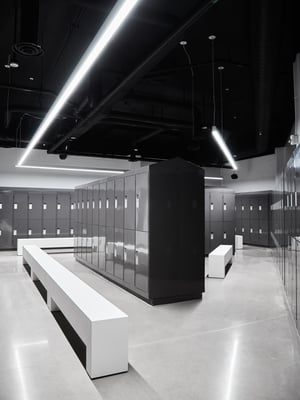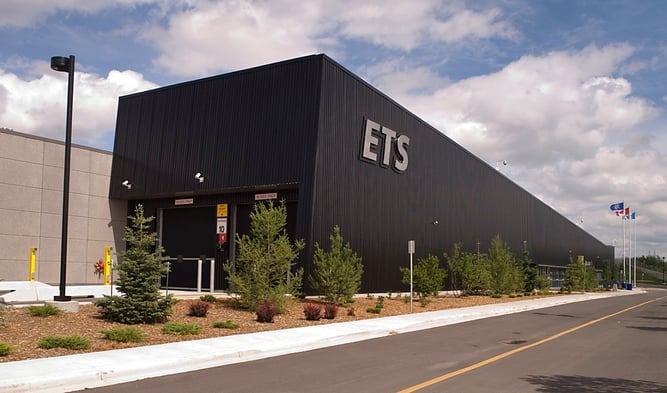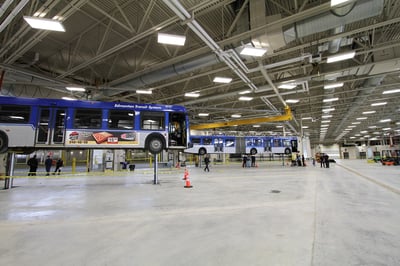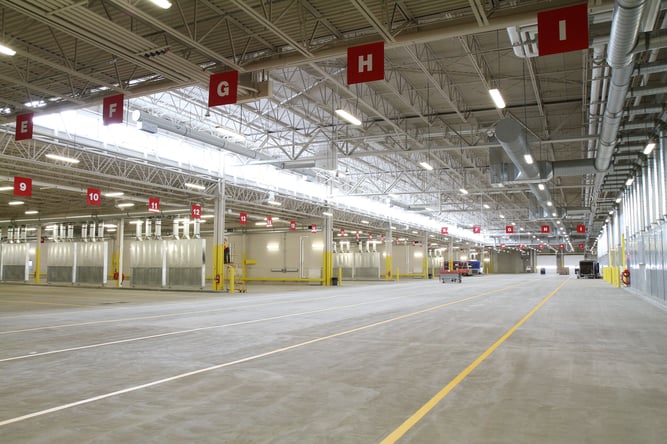Transit Operations Enhanced by Design
Designing Transit Operations & Maintenance Facilities for a Safe, Productive, and Sustainable Workplace
Bus garages have traditionally been utilitarian structures, often overlooked in terms of innovation, complexity, sustainability and worker-friendly environments. Transit owners and operators are challenging this perception by designing and constructing state-of-the-art facilities that not only support public transportation services but also prioritize safety, productivity and sustainability. These visionary garages set new standards for the industry, ensuring that transit maintenance and storage facilities are not just functional spaces, but inspiring workplaces that enhance operations in rapidly expanding communities.
 Innovation and Complexity: Redefining the Design
Innovation and Complexity: Redefining the Design
Transit operations and maintenance facilities are breaking the stereotype of uninspiring structures. New facilities are meticulously designed, incorporating cutting-edge architectural elements and advanced engineering solutions. From conceptualization to execution, they are designed to optimize functionality, safety, resiliency and operational efficiency.
Worker-Friendly Environment: Prioritizing Employee Well-being
Today’s transit operations and maintenance facilities prioritize the comfort and productivity of employees. Thoughtfully designed maintenance spaces and administrative facilities enhance worker satisfaction and performance. Incorporating natural lighting solutions, ergonomic workstations, and efficient ventilation systems, create a safe and worker-friendly environment, reducing fatigue, minimizing workplace injuries and fostering a positive work culture.
Sustainability at the Core: Embracing a Greener Future
Modern transit garages implement sustainable design features that minimize their ecological impact. Energy-efficient lighting systems, motion sensors and smart HVAC (Heating, Ventilation, and Air Conditioning) technologies significantly reduce energy consumption. Water-conservation measures, such as low-volume bus wash systems and water recycling initiatives, help minimize water usage. Furthermore, sustainable waste management practices, including recycling stations and proper disposal of hazardous materials, contribute to a greener future.

Technological Integration: Enhancing Operational Efficiency
The integration of technology has revolutionized the way transit maintenance and storage facilities operate. Advanced maintenance management software streamlines repair processes, reducing downtime and optimizing resource allocation. Real-time tracking systems enable better fleet management and more efficient scheduling of maintenance tasks. Predictive maintenance tools help detect potential issues before they escalate, minimizing unplanned disruptions in service. The seamless integration of technology enhances productivity and operational efficiency, enabling facilities to provide safe and reliable public transportation services.
Inspiring Future Projects: Setting New Industry Standards
Innovative transit operations and maintenance facilities serve as models for future projects. By reimagining the design and construction of garages, cities and transit agencies can set new industry standards for excellence. Installing worker-friendly environments, prioritizing sustainability, and harnessing technological advancements will not only enhance operational efficiency but also inspire and attract top talent in the industry. These forward-thinking facilities contribute to building sustainable and thriving communities by providing safe, reliable and eco-friendly public transportation.

Creating a Positive Work Environment: City of Edmonton Centennial Garage
We spend approximately 22% of our lifetime at work. A desirable work environment is critical to employee satisfaction and productivity. Recognizing this, the City of Edmonton went above and beyond to provide a welcoming, bright, and safe workplace for employees at the Centennial Garage.
Morrison Hershfield was Prime Consultant for this assignment, managing a large multidisciplinary team and ensuring a thoroughly integrated design.
Key features and strategies implemented to enhance the working environment include:
- Ergonomic Workstations: The garage incorporates ergonomic workstations that prioritize worker comfort and safety. Workstations are designed to minimize strain, reduce fatigue, and promote good posture, ultimately enhancing productivity and reducing the risk of repetitive stress injuries.

- Maximizing Natural Lighting: The facility maximizes the use of natural light, strategically placing windows and skylights to allow ample sunlight into the workspace. Natural lighting improves visibility and reduces energy consumption and creates a more pleasant and uplifting atmosphere for workers.
- Efficient Ventilation Systems: Adequate ventilation plays a vital role in maintaining a healthy and comfortable work environment. The Centennial Garage is equipped with efficient ventilation systems that ensure proper airflow, remove pollutants, and regulate temperature and humidity levels.
- Noise Reduction Measures: Excessive noise can significantly impact worker well-being and productivity. To counter this, the garage employs noise reduction techniques such as acoustic insulation and sound-absorbing materials to minimize the noise generated by maintenance equipment and operations, creating a quieter and less stressful working environment.
- Safety and Accessibility: The facility prioritizes safety by incorporating clear pathways, safety signage and well-organized storage areas. It includes accessible features such as ramps, elevators, and properly designed workstations to accommodate workers with varying abilities, promoting inclusivity and equal opportunities.
The Centennial Garage includes other amenities to further enhance the work environment, including a quiet room, lunchroom, courtyard with exterior artwork, change rooms, laundry facilities and even a public address system that can be used for background music and announcements.

Revolutionizing Sustainability
Typically bus garages are not synonymous with the word “sustainability”. A strong LEED® Silver certification level was sought from the Canadian Green Building Council (CaGBC) for this state‐of‐the‐art facility. Achieving this target meant doing the right things right. For example, using the sun’s energy for warmth, snow melt for future cooling, and recycled water for bus washing. Topsoil was protected during construction and stormwater runoff is controlled. Energy modeling results indicate that the Centennial Garage is 33% more energy efficient than a typical Canadian building of its size and type.
Edmonton Transit Service's Centennial Garage is an exemplary model for transit operations and maintenance facilities. Its innovative design, focus on employee well-being, commitment to sustainability, and seamless integration of technology set a new standard for the industry. As other cities and regions strive to improve their transit infrastructure, they can draw inspiration from this exceptional facility to develop sustainable transit maintenance garages that prioritize safety, promote productivity, and enhance operational efficiency.
Morrison Hershfield's successful partnership with the City of Edmonton on the Centennial Garage project continued with the design of Kathleen Andrews Transit Garage. Designed with sustainability and employee comfort in mind, the Kathleen Andrews Transit Garage has been recognized with numerous awards.
Posts by Topic
Topics
- 5G (1)
- ACEC (3)
- Active Transportation (5)
- AFP/P3 (6)
- Alberta (5)
- Anniversary (1)
- approvals (1)
- Architect (2)
- Atlanta (2)
- Awards (62)
- Biophysical Sciences (1)
- Board of Directors (1)
- Bridge Rehabilitation (3)
- Building and Facilities Engineering (2)
- Building Energy (25)
- Building Envelope (48)
- Building Science (65)
- Calgary (2)
- Canada 150 (1)
- Canstruction (2)
- Capabilities (1)
- Carbon emissions (2)
- Carbon Pathfinder Tool (1)
- Carson Awards (5)
- Charity (13)
- Climate Adaption (7)
- climate change (7)
- Code and Life Safety (8)
- Commercial Buildings (4)
- Commissioning (11)
- Construction (2)
- Construction Administration (5)
- Consulting Engineering (1)
- Critical Facilities (33)
- CSR (24)
- Culture (5)
- Dallas (1)
- Data Center (22)
- Data Center Commissioning (9)
- Data Center Design (12)
- design (9)
- Design Build (1)
- DSSP (1)
- edgecomputing (1)
- edgetechnologies (1)
- Edmonton (4)
- Electrical (24)
- Electrical engineering (8)
- Energy (8)
- Engineers Canada (5)
- Environmental (36)
- Environmental Compensation (1)
- Environmental Impact Assessment (3)
- environmental planner (3)
- Environmental Planning (5)
- ETFE (1)
- Event (12)
- Existing Buildings (6)
- Facade Engineering (4)
- Ferry Docks (2)
- FIDIC (3)
- fisheries biologist (1)
- Flood Mapping (1)
- Florida (1)
- Forensic Investigation (1)
- Fundraising (11)
- garage (2)
- Gender Diversity (8)
- Gender Intelligence (3)
- Geometric Design (2)
- Government (14)
- Hospitality (1)
- Houston (4)
- Hydro (2)
- India (1)
- industrial (4)
- Infrastructure (28)
- Innovation (1)
- interchange (1)
- IWD (2)
- IWD2021 (1)
- Land Development (8)
- Landfill (4)
- Manitoba (1)
- MCF (3)
- Mechanical (21)
- Mechanical Engineering (1)
- MEP (1)
- mission critical (10)
- Moncton (1)
- Motivational MH'er (1)
- Multi-Use Pathways (1)
- Municipal Infrastructure (5)
- municipal solid waste (2)
- MUP (1)
- New Brunswick (1)
- New Hire (17)
- New Role (3)
- Newsroom (121)
- northern communities (2)
- NVTC (2)
- ontario (1)
- Operations Consulting (8)
- Ottawa (2)
- Panel (3)
- People (124)
- Project Management (6)
- QAP (1)
- Rail (1)
- Reconstruction (1)
- regulatory (1)
- Renewable Energy (2)
- resiliency (3)
- Risk Management (1)
- Roads and Highways (3)
- Salt Lake City (1)
- Seattle (1)
- Security (4)
- Social Responsibility (30)
- Solid Waste (11)
- solid waste management (5)
- St Johns (2)
- Stantec (1)
- Structural (14)
- Sustainability (23)
- Telecom (9)
- Texas (1)
- Toronto (13)
- towers (1)
- Traffic Assessment (2)
- Transfer Station (1)
- Transit (13)
- Transit Consultant (3)
- Transit Infrastructure (3)
- Transit Planning (2)
- Transportation (30)
- Transportation Engineering (8)
- transportation structures (2)
- TTC (1)
- Vancouver (6)
- Virginia (2)
- Washington DC (3)
- Waste to Energy (2)
- Water & Wastewater (8)
- Water Resources (3)
- wellfield (1)
- wellness challenge (1)
- Whistler (1)
- Whitehorse (1)
- Wireless (2)
- Women in Engineering (5)
- Yukon (5)